Affiliate Disclaimer
Some links in this article are affiliate links. We may earn a small commission if you make a purchase through these links, at no extra cost to you. We only recommend products we find useful to our readersThe high incidence of breast cancer in women often leads to the overlooking of breast cancer in men, an uncommon but severe health problem. Even though it makes up fewer than 1% of instances of breast cancer, knowledge of this illness is essential. In the United States, experts estimate that doctors will diagnose about 2,670 new cases of invasive breast cancer in men in 2019, and the disease will cause the deaths of approximately 500 men.
Male breast cancer is stigmatized and lacks knowledge because most breast cancer awareness programs concentrate on women. Men may experience worse outcomes and delayed diagnoses as a result of this ignorance. Dispelling the stigma and raising awareness that everyone, regardless of gender, can be affected by breast cancer is crucial.
Men who are diagnosed with breast cancer have a better chance of a favorable outcome if we promote early identification and educate the public.
Understanding Male Breast Cancer
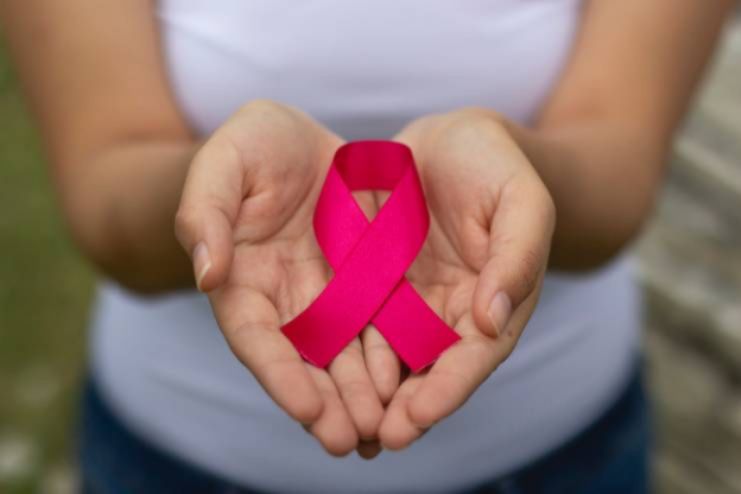
A rare kind of cancer, known as male breast cancer, is characterized by the development of cells within the breast tissue of males. People commonly think of breast cancer as a condition that occurs in females. However, breast tissue is present in every single person from birth. As a result, breast cancer can affect anyone. Breast cancer in men is relatively uncommon.
Even though it can arise at any age, it is most frequently seen in older males. It is common practice for male breast cancer patients to undergo surgical removal of breast tissue as part of their treatment. Doctors might also suggest other therapies, such as chemotherapy and radiation therapy. These treatments aim to remove or destroy cancer cells and prevent them from spreading or returning.
There are some similarities between the development of breast cancer in males and breast cancer in women, as well as the possibility that estrogen and progesterone receptors can affect both types of breast cancer when they are present. In men, just like in women, these hormones can stimulate the growth of breast cancer cells. Nevertheless, there are very significant distinctions between the two.
Men often have a smaller amount of breast tissue than women. This impacts how the disease manifests itself and how it is diagnosed. As a result of its rarity and lack of awareness, male breast cancer is frequently identified at a later stage than breast cancer in women. This results in different treatment techniques and outcomes when compared to breast cancer in women.

It’s necessary to have a thorough understanding of the intricacies of male breast cancer to achieve early detection. By disseminating information and promoting awareness regarding breast cancer in men, we may assist in mitigating the specific problems that men confront and ensure improved health outcomes. Early identification and prompt treatment play a significant role in improving health outcomes, making it crucial for individuals to be proactive and responsible in their health management.
Risk Factors for Male Breast Cancer
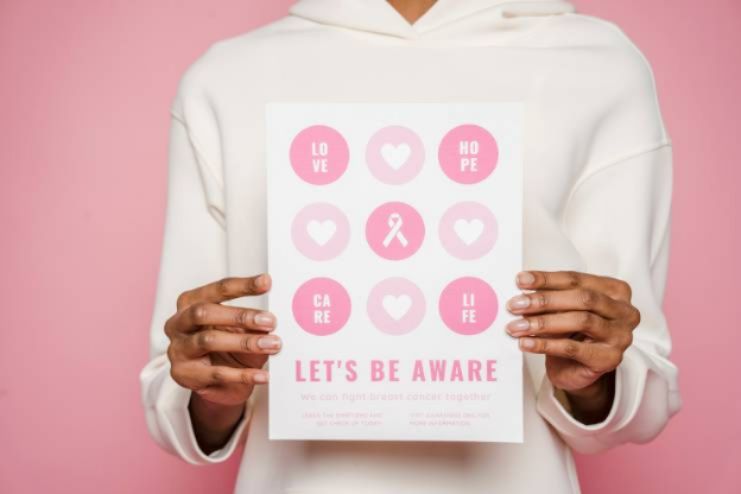
Comprehending the risk factors associated with male breast cancer is crucial for timely identification and mitigation. Several key male breast cancer risk factors contribute to the development of this disease:
● Age: Men are more likely to get male breast cancer as they get older, with most occurrences occurring in those between the ages of 60 and 70.
● Family History: The risk of developing breast cancer is increased if you have a blood relative who has the disease. A family history of breast cancer indicates a higher probability of a genetic predisposition.
● Genetic Mutations (BRCA1/BRCA2): Men with a mutation (defect) in the BRCA2 gene are at around 6 in 100 lifetime risk of developing breast cancer. Although the risk is minor, approximately 1 in 100 BRCA1 mutations can also result in breast cancer in men. While doctors typically identify mutations in these genes in families with a high incidence of ovarian and breast cancer, they have also identified these mutations in males who have had breast cancer but do not have a strong family history. Some instances of breast cancer caused in men may also be by mutations in the CHEK2, PTEN, and PALB2 genes.
● Radiation Exposure: Male breast cancer risk is increased by prior radiation exposure, especially to the chest region. It is particularly pertinent to males who have received radiation treatment for previous malignancies.
● Obesity: Research shows that being very overweight (obese) increases the risk of breast cancer in women after menopause. Obesity also raises the risk of breast cancer in men. Fat cells turn male hormones (androgens) into female hormones (estrogens). So, men who are obese have more estrogen in their bodies.
● Surgery or illness of the testicles: Male breast cancer risk can be elevated by having an orchiectomy (removal of a testicle) or by having inflamed testicles, often known as orchitis.
Men aware of these risk factors will be more alert to changes in their breast tissue, seek medical attention sooner, and improve their treatment outcomes.
Symptoms of Male Breast Cancer
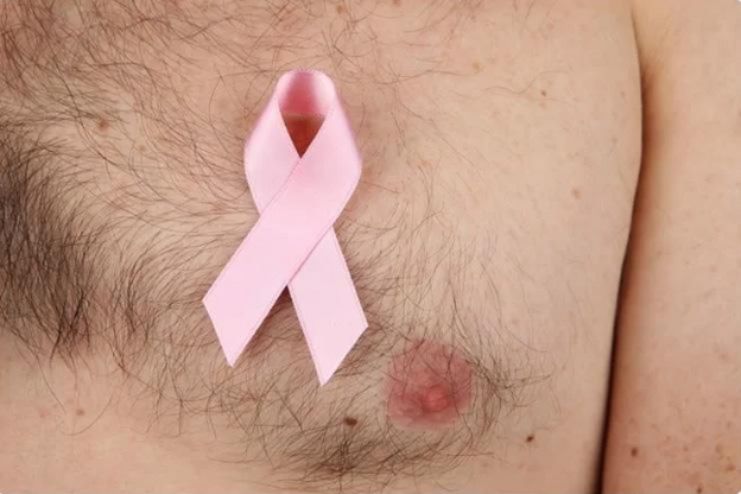
Recognizing the signs of breast cancer in males is essential for detecting the disease at an early stage and ensuring a successful treatment. Signs of breast cancer include:
● Lumps: The appearance of a lump or thickening in the breast tissue is the most prevalent symptom encountered by women who have breast cancer. Most of the time, these lumps are harmless, yet they may feel solid and immobile.
● Skin Changes: Changes in the skin include the appearance of dimples or pits on the skin of your chest, similar to the skin of an orange. These changes can also include redness, scaling, puckering, or dimpling, giving the skin a texture identical to that of orange peel.
● Nipple discharge: This can present as an explicit or red discharge from the nipple or an inverted nipple that is sunken inward rather than projecting out. It is essential to seek assistance from a medical practitioner immediately.
● Pain: Some men may suffer pain or soreness in the breast region. This discomfort is more frequently connected to lumps or other changes in the breast tissue.
It’s essential to be aware of odd changes in the breast and to seek medical attention as soon as possible. Encouragement should be given to men to undertake self-examination regularly and to report any concerns to their healthcare physician promptly. The prognosis for men who have breast cancer can be significantly improved when symptoms are detected at an early stage.
HS Next Read: 5 Best Omega-3 Supplements for Men: Enhance Your Heart Health and Vitality
Diagnosis of Male Breast Cancer
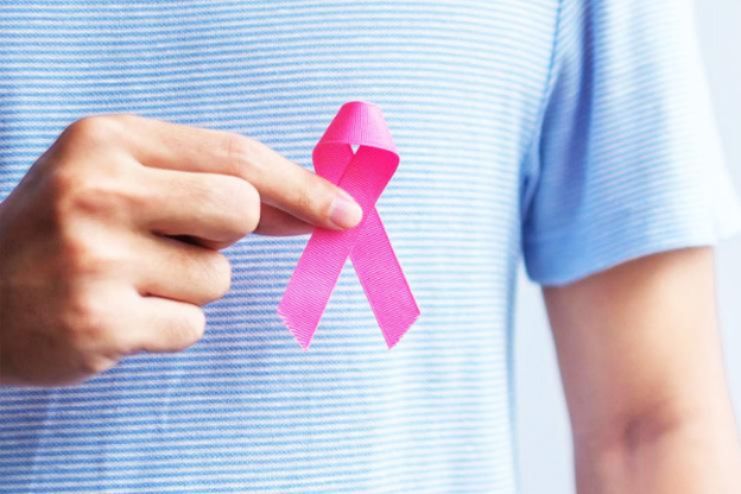
Effective therapy for breast cancer requires early and precise screening. Typical methods of diagnosis consist of:
● Physical examinations: A medical practitioner examines the breasts and surrounding tissues to look for lumps or other changes. This will determine the lumps’ size, texture, and proximity to the skin and muscles.
● Mammography: Despite being mostly connected to women, men can also be screened for breast cancer via mammography. This imaging method looks for abnormal breast tissue growth using low-dose X-rays.
● Ultrasound: A breast ultrasound uses sound waves to create a computerized image of the inside of the breast. A transducer is moved over the breast skin after a gel has been applied to it. The transducer emits sound waves, which detect the echoes as they strike bodily tissues. An image is created from these echoes on a computer screen.
● Biopsy: Your doctor may perform a core needle biopsy if a suspicious mass is discovered to ascertain whether the growth is breast cancer. In this test, the doctor takes a tiny tissue sample from the tumor using a needle. Local anesthetic can be used at a doctor’s office to perform a core needle biopsy.
The stigma associated with breast cancer in society and the false belief that it is a “women’s disease” might also discourage men from getting timely medical attention.
We want to raise awareness and advocate for routine breast cancer screening so men will obtain accurate and timely diagnoses and increase their chances for successful treatment and recovery.
Next Read: 7 Super foods to Boost Men’s Energy and Stamina
Unique Challenges for Male Breast Cancer Patients
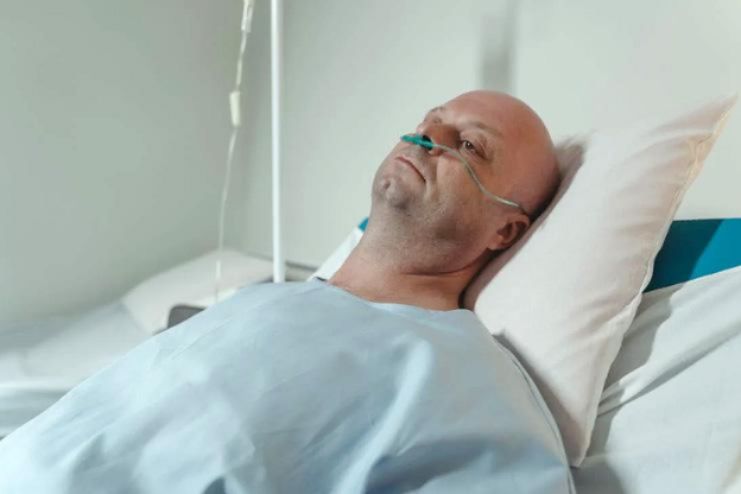
Although breast cancer is usually associated with women, men can develop the disease as well, although it is highly uncommon. Male breast cancer challenges confront a distinct set of difficulties and factors to take into consideration, which are notably different from those that are faced by their female counterparts. In addition to a lack of individualized research and support services, these problems include a delayed diagnosis, limited awareness, psychological consequences, and additional challenges.
To effectively address these concerns, it is necessary to have a complete awareness of the elements that contribute to the distinctive experience of men who have breast cancer. Because of this stigma, males may feel embarrassed and be dissuaded from seeking medical help when they experience symptoms. Consequently, they may receive a delayed diagnosis, leading to decreased outcomes.
Patients diagnosed with breast cancer who are male may face substantial emotional and psychological issues in addition to the social stigma associated with the disease. The shock of receiving a diagnosis of a disease often regarded as a feminine phenomenon may cause one to experience feelings of loneliness, perplexity, and worry. It’s pretty uncommon for men to suffer from concerns related to their body image, as well as the anxiety of getting insufficient empathy or understanding from their peers and healthcare providers.
Support groups and tools designed for guys are essential for effectively addressing these difficulties. In these meetings, males are provided with a secure environment where they can discuss their experiences, receive emotional support, and gain access to knowledge that is helpful to their condition. Male breast cancer patients can enhance their general mental health, gain strength, and lessen feelings of isolation if they interact with other people who understand the particular challenges they face.
Increasing awareness, providing targeted support, and educating patients are critical components in overcoming the problems that male breast cancer patients encounter. It will ensure that these patients receive the care and understanding they are entitled to.
Treatment Options for Male Breast Cancer
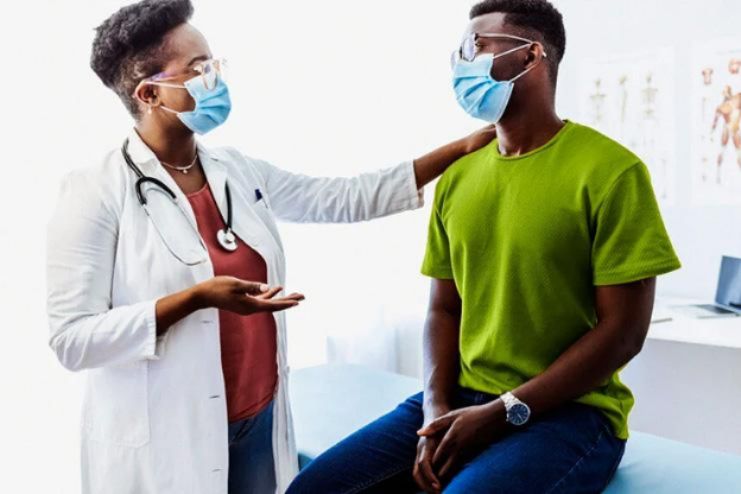
Male breast cancer treatment choices are comparable to those for female breast cancer; however, because of anatomical and biological variations, special considerations may apply. The main techniques for treating male breast cancer are as follows:
● Surgery: A mastectomy, which involves removing the entire breast tissue, is the most common surgical operation. To stop the spread of malignancy, lymph nodes may occasionally be removed.
● Radiation therapy: Surgery to remove tumors is the primary treatment for males with breast cancer. Because a man’s breasts are small, this is typically a mastectomy. Males may decide to undergo breast reconstruction surgery. Depending on the stage of breast cancer, some men who get a mastectomy may also need radiation therapy following their procedure.
● Chemotherapy: Chemotherapy is the use of medications to kill cancer cells all over the body. Doctors usually advise it when the cancer has progressed to the point where it has affected areas other than the breast tissue.
● Hormone Therapy: Tamoxifen, a hormone therapy medication, is typically the first drug therapy utilized for males with hormone receptor-positive breast cancers, either in combination with or without the CDK 4/6 inhibitor abemaciclib (Verzenio). For five to ten years, tamoxifen is taken as a tablet once daily. Doctors may treat hormone receptor-positive breast cancer in males who are tamoxifen intolerant with androgen deprivation therapy in conjunction with an aromatase inhibitor.
Although there are variances in treatment modalities, the basic concepts of breast cancer therapy are the same for men and women. For example, because male breast tissue is less than that of females, tumors in men are frequently located closer to the chest wall, which affects surgical and radiation methods. Furthermore, hormone therapy is essential since a more significant percentage of breast cancers in males than in women are hormone receptor-positive.
Creating individualized treatment programs for male breast cancer patients requires a thorough understanding of these alternatives and the specifics of their use. Prompt identification and suitable treatment can significantly enhance results and quality of life.
Coping and Support
Men who are diagnosed with breast cancer may have a range of physical and psychological side effects from the disease and treatment—coping with breast cancer, particularly for males who might feel alone in their illness because it is so uncommon. Seeking mental health assistance and establishing connections with male breast cancer support networks are two practical coping mechanisms for breast cancer. Here are a few crucial methods:
● Mental Health Support and Counseling: It’s critical to address the psychological and emotional effects of receiving a cancer diagnosis. Men who seek professional counseling can learn coping mechanisms, handle stress, and process their emotions. Male breast cancer patients encounter particular issues that can be addressed by specialized therapists in cancer care.
● Support Groups and Networks: Connecting with other male breast cancer sufferers through support groups helps foster understanding and a sense of community. These communities provide a forum for people to connect, exchange stories, and get emotional support from others who have gone through comparable struggles. Men can access resources and assistance from organizations like Breast Cancer Now and the Male Breast Cancer Coalition.
- Healthy Lifestyle Options:A healthy lifestyle can enhance mental and physical health. A healthy diet, adequate sleep, and regular exercise can all help minimize the adverse effects of treatment and improve general health. Taking part in enjoyable pastimes and pursuits can also work as a helpful diversion and improve mental health.
● Educational Resources: Patients can make well-informed decisions regarding their care and treatment by having access to trustworthy information about male breast cancer. Reputable organizations’ educational materials can offer insightful information on the illness, available treatments, and coping mechanisms.
Through the implementation of these coping mechanisms and support systems, men can more resiliently and optimistically confront the obstacles presented by breast cancer. Ensuring male breast cancer patients have access to tools and assistance for mental health is essential to improving their overall quality of life.
Conclusion
It’s essential to know the signs and risk factors of breast cancer. The significance of identifying signs, including lumps, skin changes, nipple discharge, and pain, has all been emphasized in this article. Increasing male breast cancer awareness is essential to enhancing the effectiveness of early detection and treatment.
-
Aug 2024Written by Ankita Sethy D
-
Feb 2025Edited by Ankita Sethy D
References
- https://www.cancer.org/cancer/types/breast-cancer-in-men/causes-risks-prevention/risk-factors.html
- https://www.hopkinsmedicine.org/health/conditions-and-diseases/breast-cancer/about-breast-cancer-in-men
- https://www.mayoclinic.org/diseases-conditions/male-breast-cancer/symptoms-causes/syc-20374740
- https://my.clevelandclinic.org/health/diseases/9011-male-breast-cancer
- https://www.yalemedicine.org/conditions/male-breast-cancer
- https://www.ncbi.nlm.nih.gov/pmc/articles/PMC10767513/
- https://www.mayoclinic.org/diseases-conditions/male-breast-cancer/diagnosis-treatment/drc-20374745
- https://nyulangone.org/conditions/male-breast-cancer/diagnosis
- https://outcomes4me.com/article/male-breast-cancer-a-unique-emotional-challenge/
- https://thetobilobadorcas.com/challenges-for-men-with-breast-cancer/
- https://www.cdc.gov/breast-cancer/about/men.html
- https://www.cancer.gov/types/breast/patient/male-breast-treatment-pdq
- https://www.cancer.org/cancer/types/breast-cancer-in-men/treating/by-stage.html
- https://www.komen.org/breast-cancer/treatment/by-diagnosis/male-breast-cancer/
- https://www.cancer.org/cancer/types/breast-cancer-in-men/treating.htm
- https://www.saintlukeskc.org/health-library/coping-male-breast-cancer
- https://breastcancernow.org/information-support-men-breast-cancer
- https://www.hisbreastcancer.org/
- https://www.hopkinsmedicine.org/health/conditions-and-diseases/breast-cancer/about-breast-cancer-in-men
- https://www.cancer.org/cancer/types/breast-cancer-in-men/causes-risks-prevention/risk-factors.html
In this Article



















